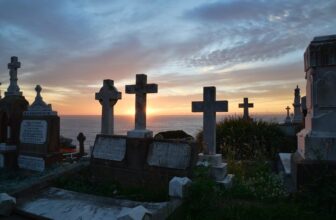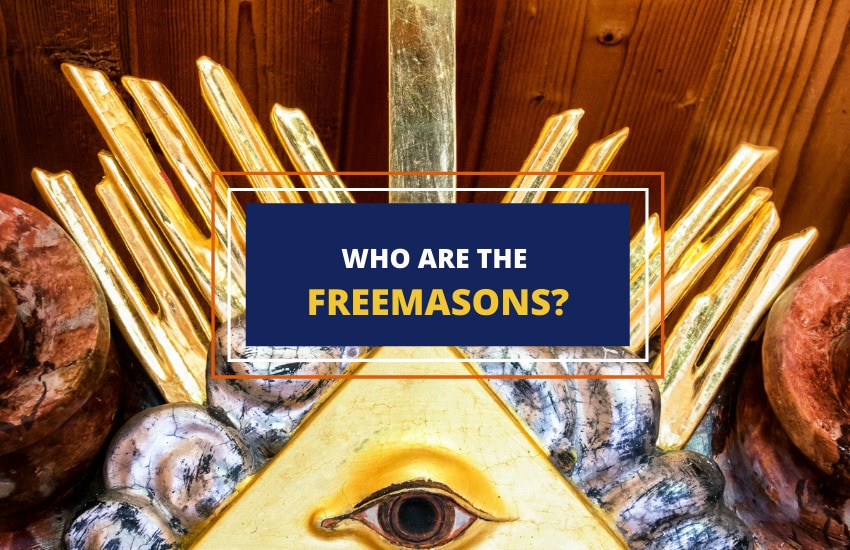
Table of Contents
Closed doors. Secret rituals. Powerful members. These are the fertile ground from which conspiracy theories grow, and few organizations have more conspiracies attached to them than the Freemasons.
But, while stories of secret codes, hidden treasures, and councils controlling world events make for great books and even better movies, how much, if any, of these ideas are true?
Who are the Freemasons? Where did they come from, and what is their role in society today?
History of the Freemasons
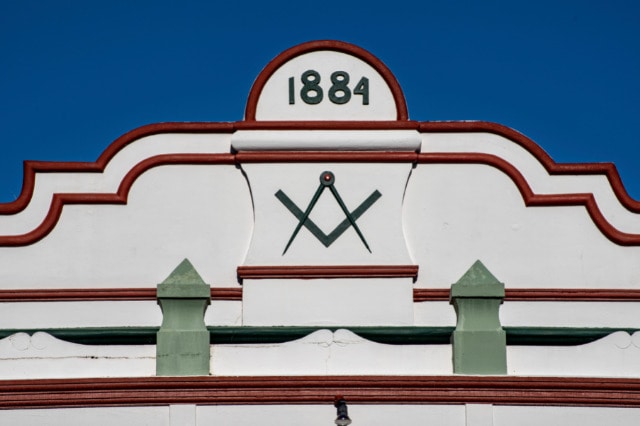
Freemasons are the heirs of medieval guilds. A guild was an association of craftsmen or merchants who came together for mutual economic interest and protection. These local guilds flourished throughout Europe between the 11th and 16th centuries. They were essential to the new economic reality coming out of feudalism as an increasing number of people moved to the cities and the middle class emerged.
Masons or stonemasons were exceptionally skilled craftsmen. Part carpenter, part architect, part engineer, masons were responsible for building some of the most important buildings in Europe of the time, including castles and cathedrals.
As it is known today, Freemasonry is the oldest fraternal organization in the world, with its beginnings in 18th century England and North America. The actual origins are somewhat murky due to many attempting to tie Freemasons to much older guilds and because each local Freemason lodge operates largely independently of one another (hence the term “free”).
Establishment of Grand Lodges
What we do know is that the first Grand Lodge was founded in 1717 in London. Grand Lodges are the governing or administrative bodies that supervises Freemasonry in a specific region. Originally known as the Grand Lodge of London and Westminster, it later became known as the Grand Lodge of England.
Some other early lodges were the Grand Lodge of Ireland in 1726 and the Grand Lodge of Scotland in 1736.
North America and Europe
In 1731 the first lodge was established in North America. This was the Grand Lodge of Pennsylvania in Philadelphia.
Some writings mention the existence of lodges in Philadelphia as early as 1715. Nonetheless, the rapid spread of lodges is good evidence of the existence of predecessors to the official founding.
Along with North America, Freemasonry also quickly spread to the European continent. Lodges were founded in France in the 1720s.
The fact that conflict arose between English and French lodges should not be a surprise. The differences reached their height in 1875 when a council commissioned by the French Grand Lodge submitted a report denying the necessity of belief in a “Grand Architect” for admittance to a lodge.
Continental Freemasonry
While Freemasons do not have religious requirements per se, there has always been this deistic belief in a higher power.
The call by the lodges in continental Europe to remove this requirement caused a schism between the two parties, and today Continental Freemasonry operates independently.
Prince Hall Freemasons
Several other strands of Freemasonry also exist, each with its unique origin. In 1775 an abolitionist and member of the free black community in Boston established a lodge for African Americans.
These lodges took their founder’s name and are today known as Prince Hall Freemasons. Mr. Hall and other free blacks were unable to obtain membership from the lodges in the Boston area at the time. Thus, they received a warrant, or permission to establish a new lodge from the Grand Lodge of Ireland.
Today, Grand Lodges and Prince Hall Lodges recognize one another and often work in cooperation. Jamaican Freemasonry distinguishes itself as having been open to all free-born men, which included people of color.
Freemasonry – Rituals and Symbols
Some of the most public and yet most secretive aspects of Freemasonry are their rituals and symbols.
The most important aspect of Freemasonry is the lodge. This is where all meetings and rituals take place. Only members and applicants are allowed into the meetings, where a guard with a drawn sword stands at the door. Applicants are only allowed in once they have been blindfolded.
The rituals which take place center around progress made through the three levels or degrees of Freemasonry. These levels are consistent with medieval guild names:
- Apprentice
- Fellowcraft
- Master Mason
Members are well dressed for their meetings and still wear the traditional apron of a mason. Important Freemasons’ manuscripts used in their ceremonies are known as the Old Charges. However, most of the traditions are recited from memory.
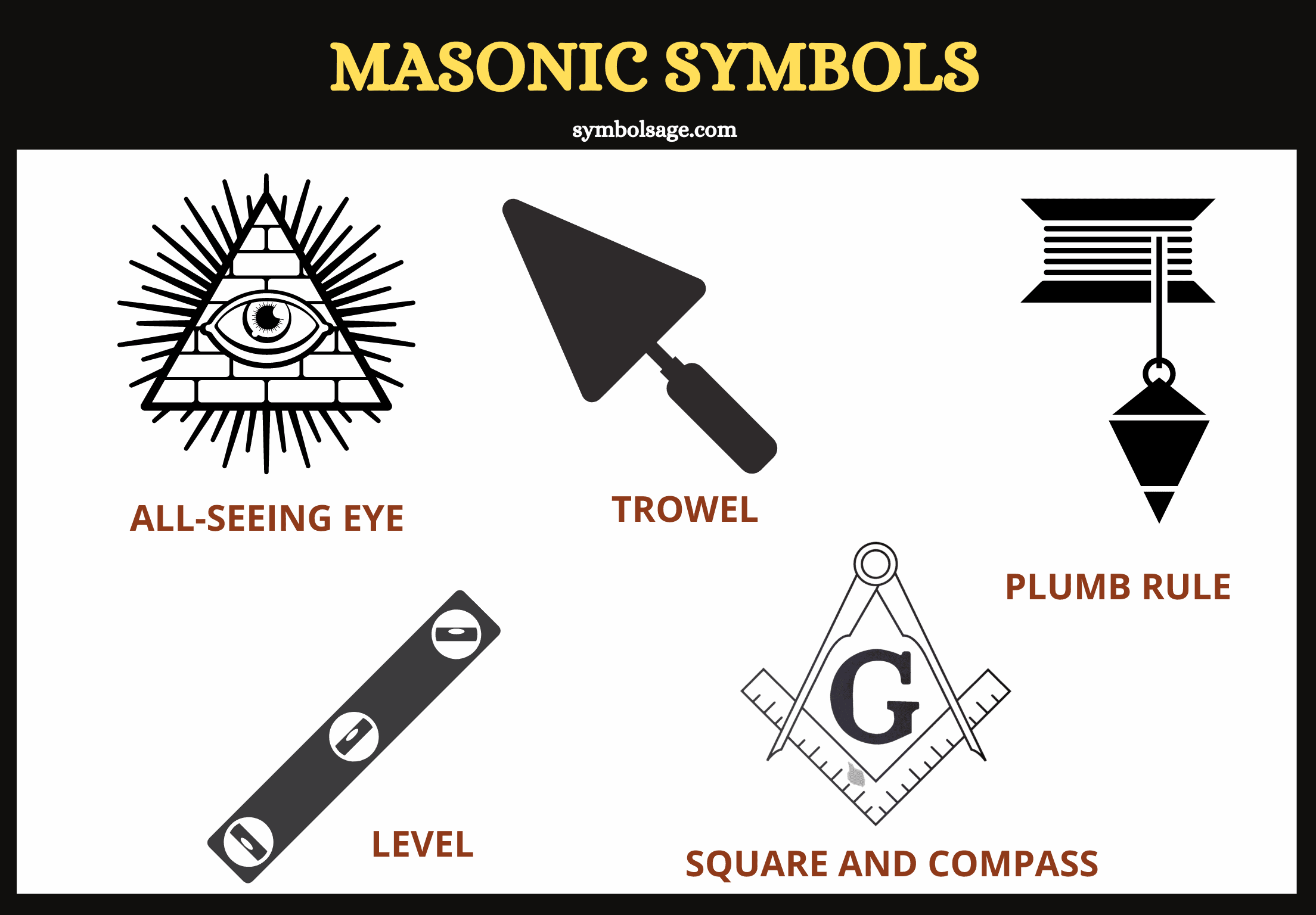
The best-known symbols of Freemasonry are also connected to their tradesmen’s past. The square and the compass are used frequently and can be found on signs and rings.
The “G,” usually found at the center of the square and compass, has a somewhat disputed meaning. It could stand for either “God” or “Grand Architect”.
Other tools often used symbolically include the trowel, level, and plumb rule. These tools symbolize different moral lessons taught in Freemasonry.
The All-Seeing Eye is another of the more well-known symbols used by Freemasons. It most likely represents the belief in the Grand Architect or higher power and nothing more.
Conspiracies About the Freemasons
The public fascination with Freemasonry is one of the more exciting aspects of this organization. There is little evidence of Freemasons being anything more than a social organization, much like other fraternities and clubs. Yet, over the years, its secrecy and the power of some of its members have sparked endless speculation.
Those famous members include George Washington, Franklin D. Roosevelt, Winston Churchill, Mozart, Henry Ford, and Davy Crockett. Benjamin Franklin was one of the founding members of the first lodge in Philadelphia.
This power and secrecy prompted the first making of a third political party in America. The Anti-Masonic Party formed in 1828 out of fear that the group was growing too powerful. This party accused Freemasons of several conspiracy theories.
The party’s main objective was opposition to Jacksonian democracy, but the overwhelming success of Andrew Jackson’s presidential campaigns ended the short-lived experiment.
Religious institutions also tend to view the Masons skeptically. Freemasonry is not a religion, and in fact, it is very upfront that while belief in a higher power is a qualification for membership, the discussion of religion is forbidden.
Yet, this has not appeased the Catholic Church, which has long prohibited church members from being Freemasons. The first of these edicts occurred in 1738 and was reinforced as recently as 1983.
Freemasonry Today
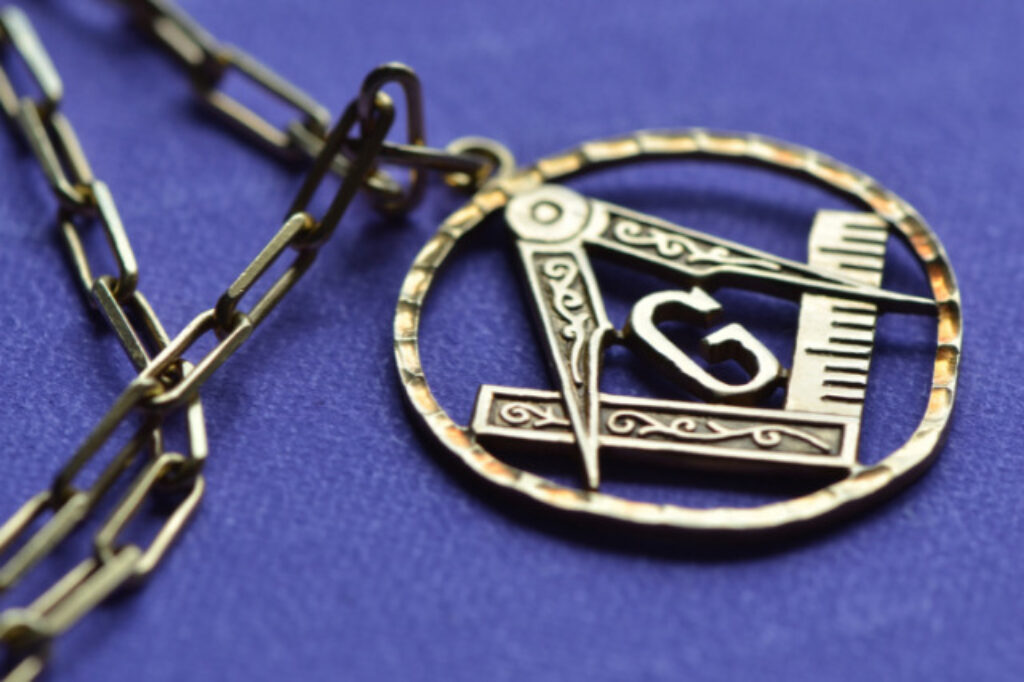
Today, Grand Lodges can be found in communities throughout England, North America, and all over the world. While their numbers have declined significantly since its peak in the middle of the 20th century, Freemasons continue to maintain their unique rituals and symbolism while also being active in community service.
Some of the features of modern Freemasonry involvement include open membership to men. Anyone who applies will likely be initiated, except for women. However, most lodges are still for men only.
They forbid the discussion of politics or religion, which sounds like a breath of fresh air in today’s social climate. For many members, it is simply a place to learn solid morals and values from like-minded men and positively influence one’s community. One of the best examples of their civil service is the Shriners’ Hospitals for Children, which operate entirely free of charge.
In Brief
One source has described Freemasonry as “A beautiful system of morality, veiled in allegory and illustrated by symbolism.” This seems to be the whole of the organization.
Freemasonry continues to be the subject of conspiracies and fanciful retellings of the founding of the United States, but this has little to do with the organization itself but much to do with people on the outside wishing they could look in.
The irony is that joining is quite accessible. Being a Freemason seems to be about being a good person, and every community could use more of that.







